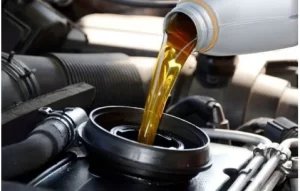
Since childhood, the environmentalist motto “Reduce, reuse, recycle” has been ingrained in our minds. Recycling is the last option to reduce our carbon footprint. Recycling is one of the most controversial and least debated strategies for reducing pollution and combating climate change. Recycling is also much more convenient than avoiding meat altogether and riding to work every day by bike due to the availability of curbside recycling pickup, in-store bottle return, and designated bins throughout public areas.
We view recycling as part of our daily routine, such as throwing away food packaging or junk mail. However, decisions made when we part ways with more extensive possessions such as appliances, machinery, or cars can have a greater environmental impact. Many Americans don’t know much about the auto-recycling process. As university students, it is important to be familiar with its importance so that we can make sustainable decisions as car owners.
So, here’s a quick snapshot of America’s recycling situation. I also included key takeaways about vehicle recycling. This was based on data I created for a report compiled in collaboration with the sellMax professionals, in San Diego.
How do Americans recycle?
It appears that there is a significant discrepancy in Americans’ recycling beliefs and practices. A national survey administered in 2014 found that more than half of respondents claimed they “recycle 75% to more of their recyclable items”, while only 8% claim they recycle all recyclables.
This sounds promising at face value. However, this is not a good indicator of the quality of follow-through and good intentions. According to an analysis by the Environmental Protection Agency (EPA), there was a 34.5% national recycling rate in 2012.
Why aren’t Americans recycling more?
A survey found that many respondents were uncertain about the recycling of plastics and other items. Respondents’ recycling habits were influenced by unclear guidelines and fears of recycling the wrong items. This could explain why recyclables make up such a large percentage of American municipal solid waste (MSW).
According to the EPA, Americans produced 258,000,000 tons of municipal solid waste in 2014. 34.6% or 89 million tonnes of this was recyclable material.
It is amazing to see how much of this waste can be recycled or composted. This will reduce greenhouse gas emissions from landfills, waste transportation, and resource extraction.
What’s vehicle recycling?
Vehicle recycling is basically:
Vehicle dismantling for spare parts. Vehicles are valuable as spare parts sources at the end of their useful lives. This has led to a vehicle dismantling business.
The Automobile Recycling Association reported that 12 million of the 14 million cars that have reached their end of useful life are being recycled. Each car has an average of 80 percent salvageable material that can be reused or recycled for new vehicles. Even though vehicles and their parts are recycled at a higher rate than other items in America, this gap is significant and can cause environmental damage.
What is recyclable from your vehicle?
The age and make of a vehicle will affect its recyclability. Professor Muahamad Zmeri b. Mat Saman explains in ” End-of-life vehicles recovery: Process description and its impact on research”:
The composition of a vehicle has seen significant changes in recent years. Iron content has declined, but ferrous metal [metal containing steel] has seen a decrease in its amount. However, more plastic materials have been incorporated to make the vehicle lighter and more efficient. The average vehicle is made from approximately 10,000 pieces. There are many different materials.
Although the cost-cutting moves to use more plastic substrates in car production has decreased their overall recyclability and saved a lot of parts from going to landfill, the majority can still be recycled. These items include potentially dangerous and resource-intensive items such as tires, engine parts, tires, and fenders. Recycled vehicles also collect pollutants such as fuel, wiper fluid, and engine coolant. This amounts to millions of gallons each year. Anything that can’t go back into the vehicle is used to make a variety of products, including metal roofing, lighting, and asphalt.
Vehicle recycling is a cost-effective and environmental-friendly solution
I have already mentioned the benefits of reducing pollution and the production of new materials from vehicle components. But this is only the tip of the iceberg when it comes to the economic and environmental impact that salvaging your car can have. Conserving existing resources, and preventing further extraction and subsequent emissions are two additional benefits.
Let’s break it down into numbers:
The automotive recycling industry is responsible for 25 billion in GDP and employs over 140,000 Americans.
Every year, enough steel is saved to make 13,000,000 new cars in America and Canada.
To make new parts for vehicles, the industry saves 85,000,000 barrels of oil.
The steel industry’s annual energy savings are enough to provide electricity for more than 17,000,000 households.
How do you recycle your vehicle?
There are thousands of scrap yards and junkyards across the United States that will buy your car for cash. Make sure you shop around in your area. A person will have approximately 12 cars in their lifetime. It is important to learn sustainable auto recycling practices now to ensure future success.
Why should you use a scrapyard when you recycle your car?
Because they can distribute every part of a vehicle, scrap yards are a great source for car recycling. Many parts of cars can be reused across a range of makes and years. The engine of a Honda Civic fits all Honda Civic models from 2006 to 2011.
Which parts have a longer life expectancy and can be trusted when used?
Because you can see these parts and inspect them yourself, bumpers and fenders are the most secure parts to buy.
You should be aware that purchasing parts such as engines or transmissions can pose a risk since you cannot test them before buying. When looking for scrap yards, remember to only buy parts from cars that have suffered damage. If you are looking to purchase a used engine from a vehicle that has been in a rear collision, it is a good idea to do so. You’ll be able to determine if the engine was still functioning if it was in its original condition.
For a small fee, many reputable salvage yards offer warranties on parts of vehicles. If the part is not working properly, you can return it to the salvage yard and get your money back.
The leading cause of pollution and greenhouse gas emissions in America is driving. We are now in an age of trying to reduce our carbon footprint. Vehicle recycling can help us offset some of the miles we drive every day and give our old cars a meaningful goodbye.






















